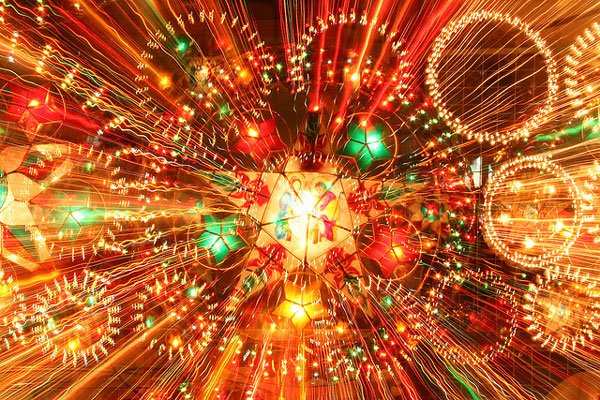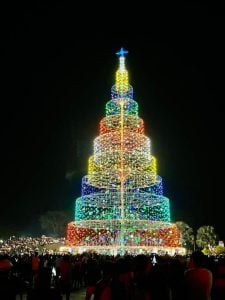
Filipinos call the local version of the Christmas lantern “parol”. The traditional lantern is a five-point star made of bamboo sticks and colored Japanese paper or cellophane. Originally, people place a lighted candle inside during nighttime but due to fire accidents, they switched to LED twinkling lights.

The parol represents the star of Bethlehem that the Three Kings used as their guide on their way to find the Child Jesus. Filipinos often hang it outside of windows, in balconies and over a belen. They either buy a parol or have the children of the family make it.
The parol has evolved over the years and one can find a wealth of different designs. They now range from intricate giants made of Capiz shells to simple stars fashioned from recycled material. Schools, church groups and companies hold contests to encourage the participants’ creativity in making the iconic star. They also promote the use of recycled and indigenous materials.
Above all, the Giant Lantern Festival in San Fernando, Pampanga is the best showcase of the modern parol. There are no simple stars in the festival, nor are there small ones. The festival, also known as Ligligan Parul, is a competition for the biggest and brightest.
Modern technology is often used in making the parols for the festival. Makers use software to program the light sequence and colors to make sure they “dance” to the tune of a pre-selected Christmas song. Don’t forget to bring a camera if you’re planning to witness this event.
For Filipinos living aboard, the parol represents a piece of home. They still hang it outside their homes, a signal that within lives a festive Filipino family. The parol remains the star that leads believers home.







